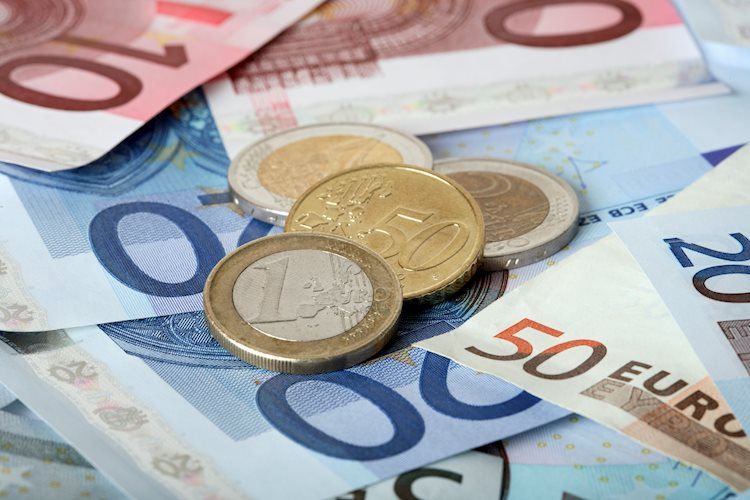- The Euro loses further ground against the US Dollar.
- European stocks on their way to a positive close.
- Chair Powell comes next on the docket.
The Euro (EUR) now loses the grip against the US Dollar (USD), motivating EUR/USD to slip back to the 1.0840 region, or two-week lows, on Friday.
On the flip side, the Greenback extends the weekly recovery and revisits the 103.70 area when gauged by the USD Index (DXY), a region also coincident with the critical 200-day SMA. The current bounce in the index comes against the backdrop of the marginal bullish attempt in US yields across different timeframes.
The current monetary policy stance remains steady, as investors take into account the possibility of future interest rate cuts by both the Federal Reserve (Fed) and the European Central Bank (ECB) in the spring of 2024.
On the domestic calendar, final Manufacturing PMIs in Germany and the Eurozone came in at 42.6 and 44.2, respectively, for the month of November.
In the US, the ISM Manufacturing PMI worsened to 46.7 in November, Construction Spending expanded 0.6% MoM in October and the final S&P Global Manufacturing PMI came in at 49.4 for the month of November.
Daily digest market movers: Euro succumbs to Dollar’s bid bias
- The EUR drops to multi-day lows against the USD.
- US and German yields trade in a mixed note so far.
- Investors expect the Fed to start cutting its rates in the spring of 2024.
- Markets lean towards a protracted impasse of the ECB until Q2 2024.
- Chinese Caixin Manufacturing PMI rose past 50 in November.
- Chair Powell will participate in a roundtable discussion.
Technical Analysis: Euro risks sustained losses below 1.0820
EUR/USD alternates gains with losses in the sub-1.0900 region following Thursday’s pronounced pullback.
Extra losses could prompt EUR/USD to initially confront the key 200-day SMA at 1.0817, while the 55-day SMA at 1.0679 should provide further temporary contention. The loss of the latter exposes the weekly low of 1.0495 (October 13) ahead of the 2023 low of 1.0448 (October 3) and the round level of 1.0400.
Occasional bullish attempts should meet immediate hurdle at the November top of 1.1017 (November 29) seconded by the August peak of 1.1064 (August 10) and another weekly high of 1.1149 (July 27), all preceding the 2023 top of 1.1275 (July 18).
Meanwhile, the pair is seen maintaining its constructive outlook while above the 200-day SMA.
Euro FAQs
The Euro is the currency for the 20 European Union countries that belong to the Eurozone. It is the second most heavily traded currency in the world behind the US Dollar. In 2022, it accounted for 31% of all foreign exchange transactions, with an average daily turnover of over $2.2 trillion a day.
EUR/USD is the most heavily traded currency pair in the world, accounting for an estimated 30% off all transactions, followed by EUR/JPY (4%), EUR/GBP (3%) and EUR/AUD (2%).
The European Central Bank (ECB) in Frankfurt, Germany, is the reserve bank for the Eurozone. The ECB sets interest rates and manages monetary policy.
The ECB’s primary mandate is to maintain price stability, which means either controlling inflation or stimulating growth. Its primary tool is the raising or lowering of interest rates. Relatively high interest rates – or the expectation of higher rates – will usually benefit the Euro and vice versa.
The ECB Governing Council makes monetary policy decisions at meetings held eight times a year. Decisions are made by heads of the Eurozone national banks and six permanent members, including the President of the ECB, Christine Lagarde.
Eurozone inflation data, measured by the Harmonized Index of Consumer Prices (HICP), is an important econometric for the Euro. If inflation rises more than expected, especially if above the ECB’s 2% target, it obliges the ECB to raise interest rates to bring it back under control.
Relatively high interest rates compared to its counterparts will usually benefit the Euro, as it makes the region more attractive as a place for global investors to park their money.
Data releases gauge the health of the economy and can impact on the Euro. Indicators such as GDP, Manufacturing and Services PMIs, employment, and consumer sentiment surveys can all influence the direction of the single currency.
A strong economy is good for the Euro. Not only does it attract more foreign investment but it may encourage the ECB to put up interest rates, which will directly strengthen the Euro. Otherwise, if economic data is weak, the Euro is likely to fall.
Economic data for the four largest economies in the euro area (Germany, France, Italy and Spain) are especially significant, as they account for 75% of the Eurozone’s economy.
Another significant data release for the Euro is the Trade Balance. This indicator measures the difference between what a country earns from its exports and what it spends on imports over a given period.
If a country produces highly sought after exports then its currency will gain in value purely from the extra demand created from foreign buyers seeking to purchase these goods. Therefore, a positive net Trade Balance strengthens a currency and vice versa for a negative balance.
Read the full article here

